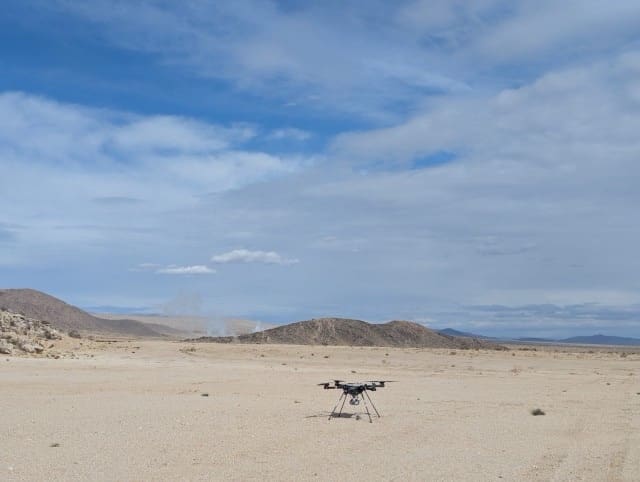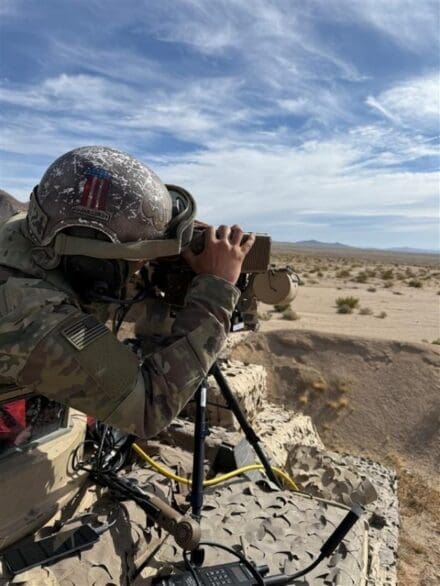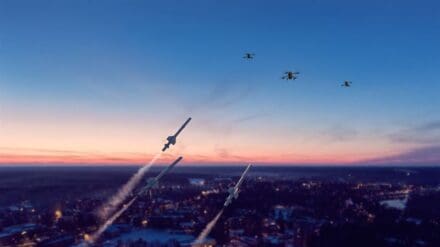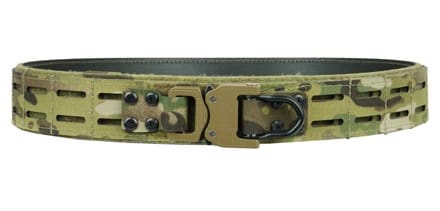FORT BELVOIR, Va. (Aug. 11, 2025) — Army researchers are aiming to deliver aided target recognition to unmanned aerial systems, speeding up squad target detection on the battlefield and increasing Soldier lethality.
With current systems, Soldiers manually monitor a UAS video feed, searching through large areas of terrain and obstacles for extended periods of time in a quickly moving, dynamic environment. Now, DoD scientists and engineers are integrating autonomy and threat detection to bring new capabilities for small organic Army UAS.
The Army’s Command, Control, Communications, Computers, Cyber, Intelligence, Surveillance and Reconnaissance (C5ISR) Center and the Defense Advanced Research Projects Agency have led R&D to bring new technology to Soldiers since 2019 with a specific focus on small UAS.
“The primary goal is to provide autonomy at the squad level by using high-level autonomous behaviors like Smart Search, which enables autonomous area searching, target detection, and the ability to track and follow high-priority targets,” said Mathew Wilson, the program’s lead at C5ISR Center. “Soldiers will have greater lethality, survivability and maneuverability.”

Placing UAS into the hands of Soldiers for AiTR is breaking ground in DoD research, which previously focused on Army ground platforms, Wilson said. The Army’s goals are to reduce Soldier fatigue, improve situational awareness, and enable faster, more accurate decision-making, Wilson said.
“C5ISR Center is expanding on the foundation of our extensive AiTR expertise. UAS have new capabilities as the system processes vast amounts of information for Soldiers into actionable ISR data. Removing the need to manually control UAS while automatically detecting and relaying threat information to the Squad keeps more Soldiers in the fight,” Wilson said.

In-house DoD R&D brings subject-matter experts and Soldiers together during experimentation events for direct feedback, leading to continued improvements. During Project Convergence Capstone 5, the system allowed forward observers to autonomously search beyond line-of-sight for potential threats.
Squad leader Sgt. Brian Ward, of 1st Brigade Combat Team, 1st Armored Division, gave positive feedback on AiTR testing during PC C5.
“If someone has issues trying to find targets or personnel, it’s circling and tracking as they move,” Ward said. “It’s a game changer. If it can detect more targets, the better, especially if you can choose which one to nominate and call for engagement.”

The system populates the data on a common operating picture using existing Army infrastructure — Android Tactical Assault Kit and Nett Warrior device — to avoid the need to field additional software and hardware. The ATAK interface allows command and control of the UAS’ autonomous behaviors.
“The UAS automatically launched, traversed to the area of interest, autonomously searched and passed back detected targets without any further human interaction. Since AiTR has not yet been fielded, automatically detecting potential threats was a huge hit,” Wilson said.
By Dan Lafontaine, C5ISR Center Public Affairs
You can skip to the end and leave a response. Pinging is currently not allowed.
Read the full article here








Leave a Reply